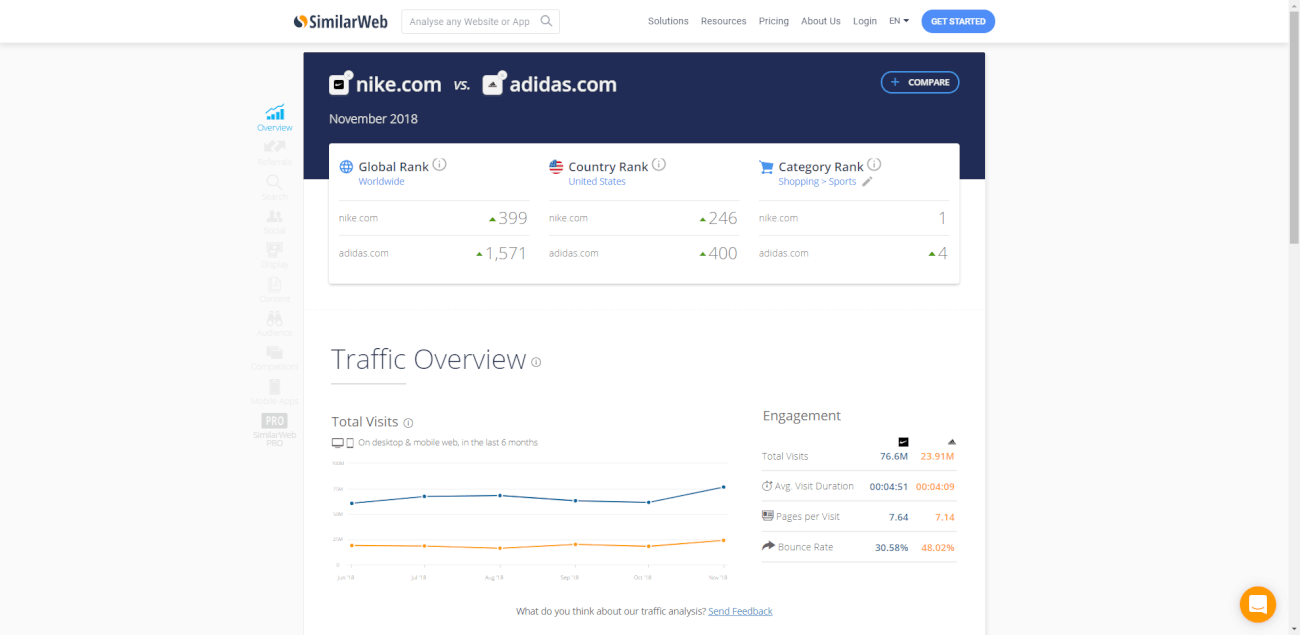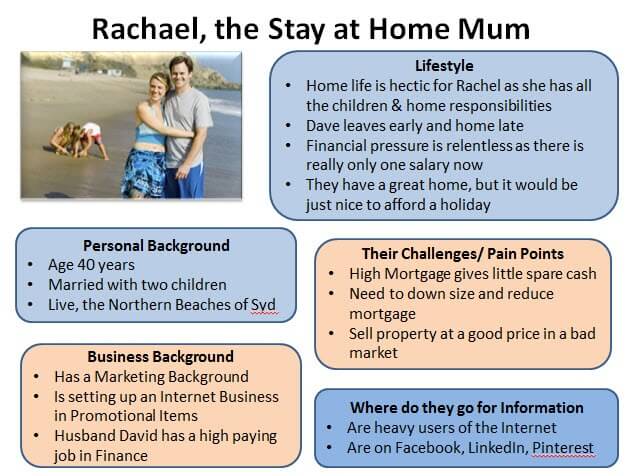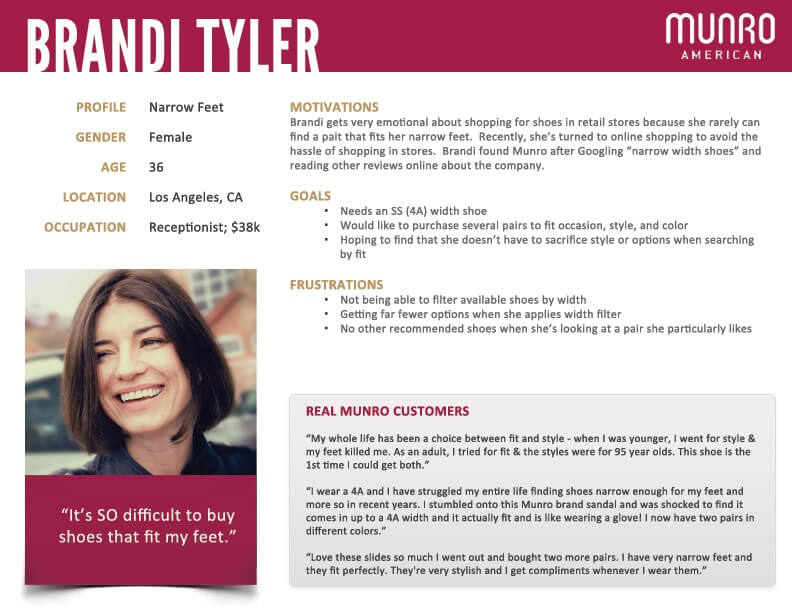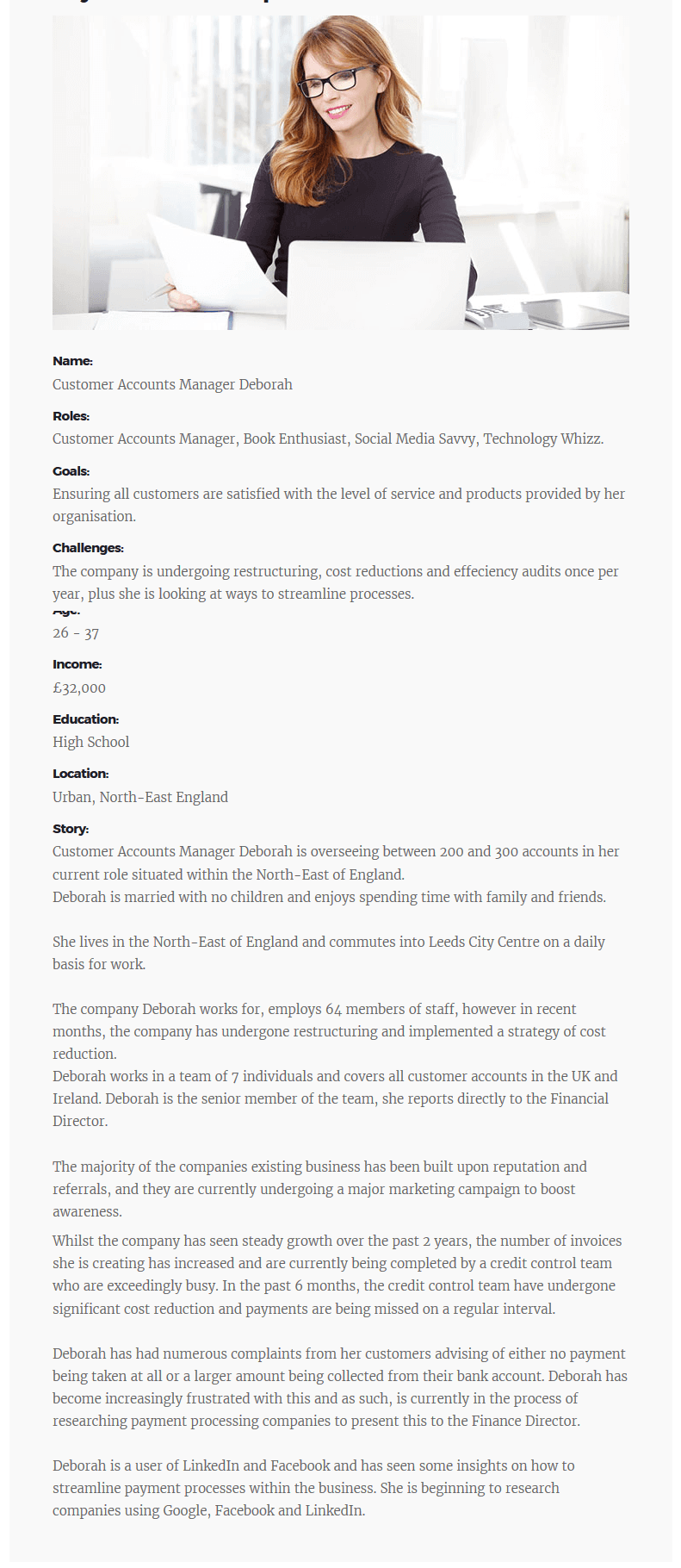How to create customer personas that will improve your marketing and sales communication
Have you ever wondered why some products or services are a better fit for certain people than they are for others? It’s not as much about those products themselves as it is about the consumers with different needs. The goods we purchase are specifically designed to appeal to certain types of consumers hence the difference in communication and marketing.
You need to know what kind of customers you want to sell your products to and in order to find out, you should create customer personas.
What’s a customer persona

A customer persona is a fictitious character that represents a set of characteristics of your ideal customer. Depending on your product offering and the size of your business, you can have one, ten, or maybe even more personas.
We can distinguish different approaches to creating personas. Some of them are going to be extremely detailed, while others will be just loosely related to what a potential customer could be like. There will be personas that are going to be very much descriptive and those that are going to list the key elements with bullet points.
Personally, I’d say the more detailed a persona is, the better. As long as we’re not going to dive deep into aspects irrelevant to the consumer choices a persona could make, you want to know about it as much as possible.
How to create a customer persona
As PhD and specialist in personas, Lene Nielsen, mentions in her Interaction Design Foundation encyclopedia article, Personas, we can distinguish four different perspectives on personas:
Alan Cooper’s goal-directed perspective; Jonathan Grudin, John Pruitt and Tamara Adlin’s role-based perspective; the engaging perspective that I myself use, which emphasizes how the story can engage the reader (Sønderstrup-Andersen, 2007); and the fiction-based perspective. The first three perspectives agree that the persona descriptions should be founded on data. However, the fourth perspective, the fiction-based perspective, does not include data as the basis for persona description, but creates personas from the designers’ intuition and assumptions; they have names such as ad hoc personas, assumption personas, and extreme characters.
We’re all about data at Brand24 and we’re going to focus on the three, less abstract ways of creating a customer persona. As I have mentioned, there are different approaches to it and I am not going to judge which I think is the best. If it’s the first time you’re creating a customer persona for your business, you need to do thorough research about your current customers.
What if I am just starting a business and don’t have any existing customers, you might ask?
Well, that’s going to be a little bit more difficult but not impossible. No matter what niche you’re in, I am 99% sure there are competitors and their customers you could learn from.
Go to the social media channels of your competitors and check out the people who engage with their content. Visit profiles of those people and try to obtain as much information about them as possible.
A brilliant idea Shopify suggested in their post about customer personas is to go on Similar Web and search where does the traffic of your competitors come from and then try to engage people in those sources.
Other than that, you might also use social media monitoring to find conversations about your industry or products similar to yours. Have a look at the people taking part in those chats and try to notice similarities between them. Are they generally men or women? Is it a little bit of both? What age do they seem to be? If possible, find out what do they like and dislike.
Now, let’s assume you already have some traction as a business and have a reasonable number of customers you can build your personas upon.
You probably store your customers’ data in some sort of CRM. We use Intercom at Brand24 and while it’s of great value in terms of live chats with our customers, it’s even more important to us as far as data on their behaviour is concerned. Information such as a number of logins and web sessions let us evaluate how engaged those people are and it’s easier for us to find out how to reach more of such people.
Then, the aforementioned live chats enable us to ask the customers directly about their needs, concerns and problems they encounter while using the tool. Those pieces of information are the most crucial as we obtain them first-hand.
Other than that, you could also conduct a survey among your existing customers, trial users testing your products, as well as other people that for some reason haven’t signed up for your product yet but are potentially your future customers. Use tools like Survicate or Google Forms to get the feedback you could use while building your customer personas.
What information should I include in my customer personas
Now that we know how to get the information required to create customer personas, it’s time to finally put the pieces together. You might look up persona templates online that you’ll just need to fill in with data, but in case you wanted to build a template yourself, here’s what should be on your list:
- Name and job title – it can be any name, CMO Richard, Head of Content Monica, that doesn’t really matter and only serves the purposes of humanizing your persona; a job title should be related to whatever you found in your research. If you have enough data to build a few personas, they should easily be distinguishable by their job title.
Are they the decision makers? Are they the business owners? We have customers of different backgrounds at Brand24, like digital agencies or bookmakers, for instance, and their level of familiarity with how social media and social media monitoring tools work is different for sure. Thus we should communicate the features and benefits of using tools like ours in a slightly different way, depending on who we’re talking to. - Demographics – that encompasses information such as age, gender, location, education, salary, family, etc.
If you struggle with finding the demographics information, Google Analytics should come to the rescue. Head over to the Audience Overview to learn about their age, gender, interests and so on. - Goals and challenges – that should tell you what your customer persona’s goals and challenges are and how they align with what you can offer them
- Values and objections – so the things one appreciates about a product, like quality customer service or updating the data in real-time, and the things that make them question the idea of purchasing from you, like price or lack of some features they find crucial
Following the advice from Kevan Lee of Buffer, you might also want to include the marketing message and the elevator pitch that would represent the idea of how you’d convince a given customer persona to purchase your product or service.
Keep in mind there’s going to be a clear difference between B2B and B2C customer personas. The biggest one relates to the fact that a B2C customer in most cases is in charge of his own money, whereas a B2B customer is not always a decision maker and is spending his or company money.
Another distinction is all about the description itself. You don’t need too much personal information for a B2B customer persona that mostly focuses on professional background. Analogically, you won’t include many work details for a B2C customer persona and are going to focus on how they spend their time outside work.
Examples of customer personas
Apart from the obvious distinction I’ve just written above, customer personas can take different forms.
Some of them are short and sweet and consist mostly of bullet points:
(Image courtesy of blog.alexa.com)
While others are more descriptive and include fictional quotations, for instance:
(Image courtesy of indiegamegirl.com)
Then, some can take really long forms:
(Image courtesy of red-fern.co.uk/blog)
The first two images are examples of B2C customer personas, whereas the third one is an example of a B2B customer persona. There are no rights or wrongs here as they all could serve different needs and preferences. Bullet points will do for some of the people, but others will need a longish description to actively involve themselves in the lives of the personas.
Over to you
What about you? Have you already created customer personas for your business? Marketing and sales efforts without personas are a hit or miss. The more tailored your communication is, the better, and the only way to adjust it is to research your customers thoroughly. After all, you need to know who you’re talking to in order to communicate effectively and reap the rewards afterwards.
Related articles
Top Reads
Brand Monitoring: Tools & Guide for 2026
Brand Awareness Strategy [The Ultimate Guide for 2026]
The Best AI Hashtag Tracker and Other Hashtag Tracking Tools [2026]
Social Media Reach: How to Measure & Improve It in 2026?
X (Twitter) Analytics Tools: The 10 Best to Try in 2026
Sentiment Analysis: What is it & Why do You Need it in 2026?
Share of Voice: Definition, Calculation, Tools [2026 Guide]
Brand Reputation Management: 6 Expert Tips for 2026
A Complete Guide to AI Social Media Analysis [2025]
How to See How Many Times a Hashtag Was Used on X (Twitter)
Start Social Listening!
Get the Brand24 trial and start social listening like a PRO.






